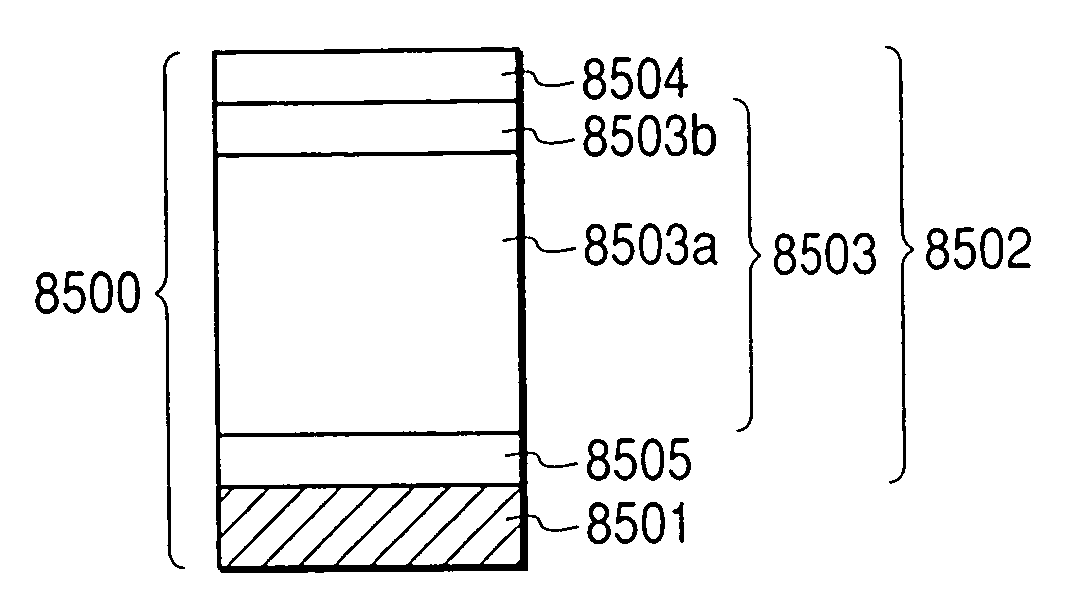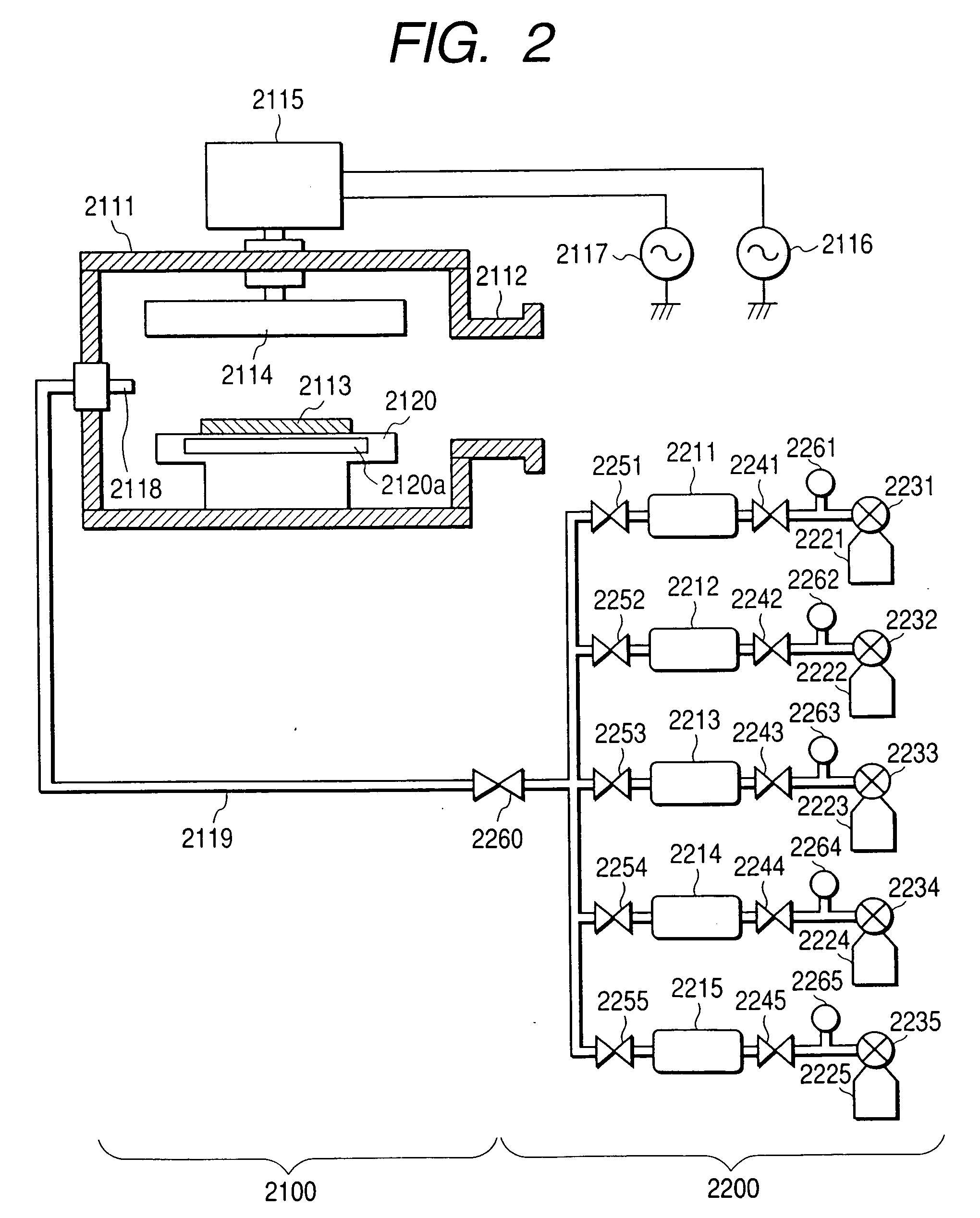Vacuum processing method, vacuum processing apparatus, semiconductor device manufacturing method and semiconductor device
a vacuum processing and vacuum processing technology, applied in the field of vacuum processing methods, vacuum processing apparatuses, semiconductor device manufacturing methods and semiconductor devices, can solve the problems of uneven processing, inability to render vacuum processing characteristics further uniform in a broad range, and non-uniformity of film quality or change of film quality itself in the thickness direction
- Summary
- Abstract
- Description
- Claims
- Application Information
AI Technical Summary
Benefits of technology
Problems solved by technology
Method used
Image
Examples
exemplary experiment 1
[0298] (Exemplary Experiment 1)
[0299] In this exemplary experiment, the apparatus shown in FIG. 2 was used to form the amorphous silicon deposited film on the conditions shown in Table 1. Polished glass (Corning #7059) of 1.times.1.5 inches (25.times.38 mm) was used as the substrate to be processed 2113, and this was installed as the 10 substrates of 1.times.1.5 inches (25.times.380 mm) arranged in the lengthwise direction at the center of the substrate stage 2120 of which length in the longer direction is 450 mm. The high-frequency power electrode 2114 is an alumina-sprayed stainless bar of which diameter is 10 mm and length is 500 mm, which was placed in parallel with the substrate 2113 at a distance of 60 mm therefrom.
[0300] The high-frequency power supplies 2116 and 2117 are comprised of a signal generator and amplifier respectively, and have a constitution capable of changing the oscillation frequencies. The amplifier of a first high-frequency power supply 2116 was adjusted to ...
exemplary experiment 2
[0313] (Exemplary Experiment 2)
[0314] In this exemplary experiment, the apparatus shown in FIG. 2 was used to form a hydrogenated amorphous silicon carbide film. The, placement of the substrates 2113, the high-frequency power electrode 2114 and so on was the same as the exemplary experiment 1.
[0315] For the high-frequency power supplies 2116 and 2117, those comprised of the signal generator and the amplifier capable of changing the frequencies were used just as in the exemplary experiment 1, and the oscillation frequencies thereof were variously changed to conduct this exemplary experiment.
[0316] In this exemplary experiment, the total power of the first high-frequency power supplied from the first high-frequency power supply 2116 and the second high-frequency power supplied from the second high-frequency power supply 2117 was 400 W, and the ratio of the second high-frequency power to the total power was 0.4. As for the frequencies, the frequency f1 of the first high-frequency power...
exemplary experiment 3
[0325] (Exemplary Experiment 3)
[0326] In this exemplary experiment, the apparatus shown in FIG. 2 was used to form the amorphous silicon deposited film. The placement of the substrates 2113, the high-frequency power electrode 2114 and so on was the same as the exemplary experiment 1.
[0327] In this exemplary experiment, the experiment was performed by fixing the oscillation frequency f1 of the first high-frequency power supply 2116 at 100 MHz and variously changing the oscillation frequency f2 of the second high-frequency power supply 2117. For the high-frequency power supplies 2116 and 2117, those comprised of the signal generator and the amplifier capable of changing the frequencies were used just as in the exemplary experiment 1, and adjustments were made to the amplifier and the matching box 2115 each time the oscillation frequency f2 of the second high-frequency power supply 2117 was changed.
[0328] In this exemplary experiment, the total power of the first high-frequency power s...
PUM
| Property | Measurement | Unit |
|---|---|---|
| frequencies | aaaaa | aaaaa |
| frequencies | aaaaa | aaaaa |
| frequencies | aaaaa | aaaaa |
Abstract
Description
Claims
Application Information
 Login to View More
Login to View More - R&D
- Intellectual Property
- Life Sciences
- Materials
- Tech Scout
- Unparalleled Data Quality
- Higher Quality Content
- 60% Fewer Hallucinations
Browse by: Latest US Patents, China's latest patents, Technical Efficacy Thesaurus, Application Domain, Technology Topic, Popular Technical Reports.
© 2025 PatSnap. All rights reserved.Legal|Privacy policy|Modern Slavery Act Transparency Statement|Sitemap|About US| Contact US: help@patsnap.com



